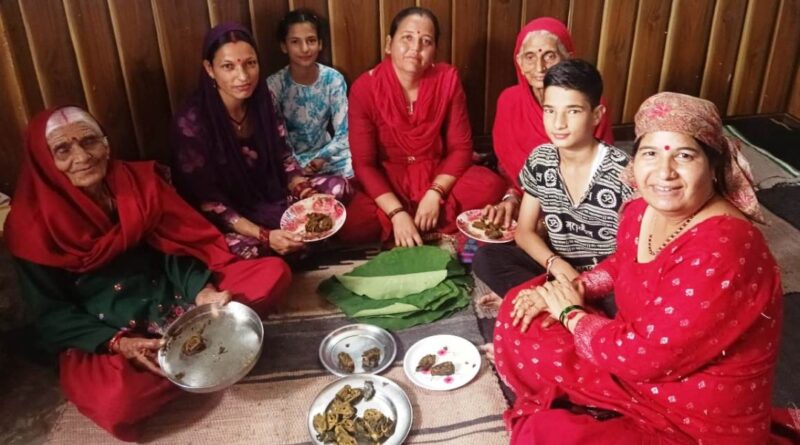A Monsoon Delight: The Cultural and Culinary Charm of Arbi Leaf Patid
As the monsoon clouds roll in, kitchens across Himachal Pradesh come alive with the aroma of a beloved seasonal delicacy—Patid, made from tender arbi (colocasia) leaves. This traditional dish, cherished especially during the rainy season, is not just a treat for the taste buds but also a nostalgic reminder of age-old customs and community gatherings.
While winter meals often feature arbi root paired with maize rotis, the rainy season brings a different kind of joy. Patid and crispy pakoras made from arbi leaves become the stars of the table, their rich flavors enhanced by the earthy freshness of the season. In the Keylong region of Shimla district, locals prepare a variety of dishes using these heart-shaped leaves, known in the local dialect as dhidhde. Served with a dollop of desi ghee or a side of curd, this dish is both comforting and deeply rooted in tradition.
During the festival of Dagaili (or Dagwans), families in Keylong and the border areas of Sirmaur and Solan districts follow a unique ritual. Patid is prepared and placed at the doorstep at night as an offering, believed to ward off evil spirits—a fascinating blend of culinary art and folklore.
Elders from the Junga area, like Dayaram Verma, Balak Ram Nirmohi, and Yogmaya Sharma, recall how Patid was once a staple during community feasts and times of scarcity. Its large leaves served as natural plates, and when grains were in short supply, Patid became a nourishing alternative that sustained families.
Beyond its cultural significance, arbi leaves are a powerhouse of nutrition. According to Ayurveda expert Dr. Vishwabandhu Joshi, these leaves—locally called Lambu—are rich in Vitamin A, Vitamin C, Iron, and Folate, making them a valuable addition to any diet.
In every bite of Patid lies a story—of resilience, tradition, and the simple joys of seasonal eating. It’s more than just food; it’s a celebration of heritage passed down through generations.



